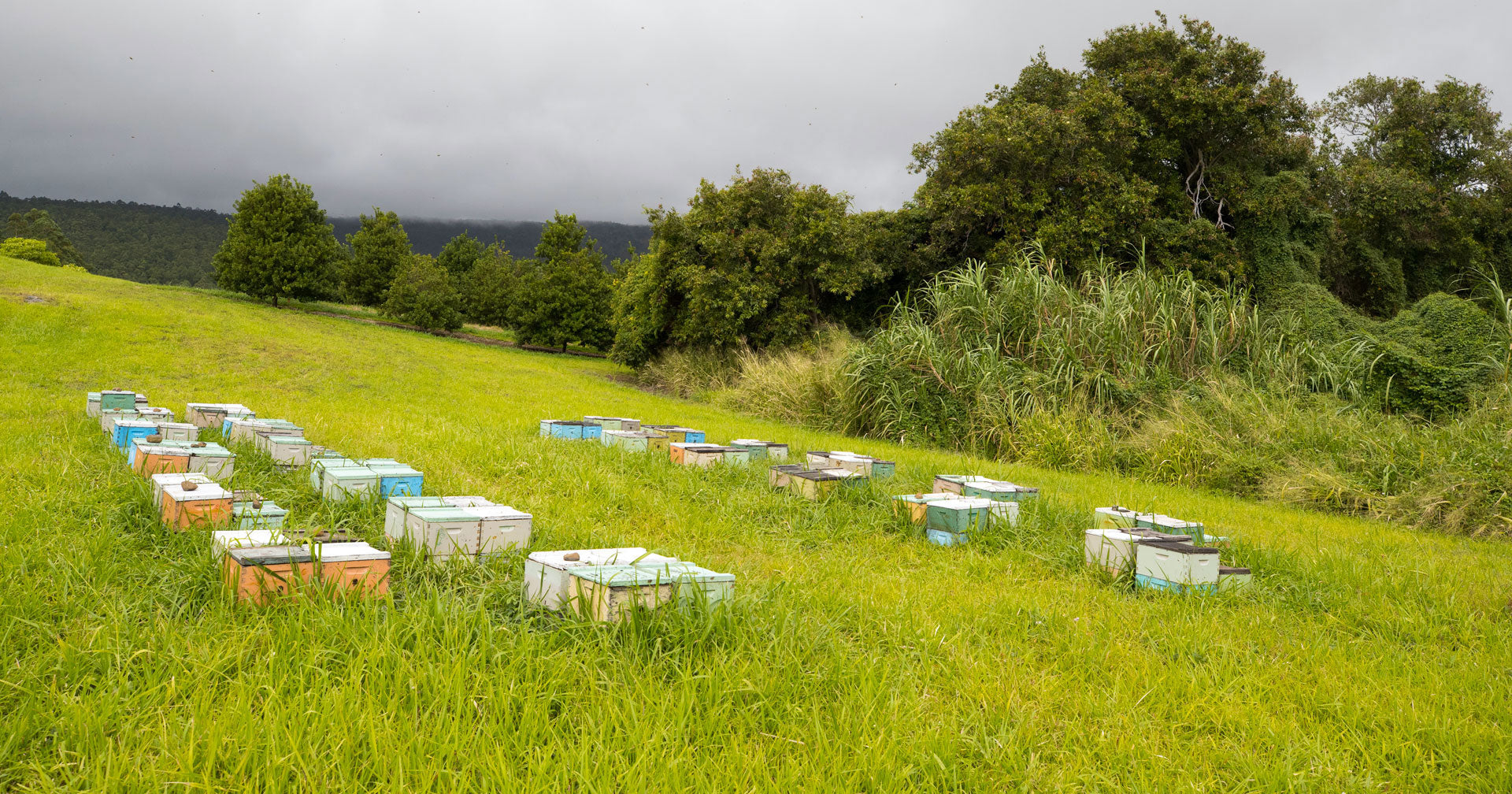Each of our hives each has about 50,000 bees. Each hive has one queen, and 100 female worker bees for every male drone bee. The queen’s only job is to lay eggs and a drone’s job is to mate with the queen. The worker bees are responsible for everything else: gathering nectar, guarding the hive and honey, caring for the queen and larvae, keeping the hive clean, and producing honey.

The Queen Bee
The queen is like the goddess: her life is committed to selfless service by being the reproductive center of the hive. She lays all the eggs (about 1,500 per day!) and only leaves the hive once in her life in order to mate. Becoming the queen bee is a matter of luck. Queens become queens only because as eggs they had the good fortune of being laid in cells specifically designated for raising queens. Then, they are fed more “royal jelly” (which contains more honey and pollen than the “larval jelly” that is eaten by workers and drones), allowing them to grow larger than other female bees. Without a queen, life in the hive grows chaotic. The worker bees forage for nectar and pollen less, and when they do forage, they bring less back to the hive. When the queen dies (or if she slows down egg production), worker bees once again designate queen cells and raise new virgin queens.
Learn more about the queen here: 7 Fascinating Facts About the Queen Bee
The Male Drones
A male drone has only one purpose in life: to mate with the queen. And, there are 100 female worker bees for every male drone bee. While this may be appealing to some males, a drone’s life is hardly enviable. Drones are incapable of feeding themselves or foraging for food, they lack stingers, and they die immediately after mating. And, when times are lean or during the winter (when the queen does not mate), worker bees force drones outside the hive, leaving them to starve. But, don’t worry…our male bees don’t suffer because Hawaii’s year-round warm climate ensures consistent warm weather…and our beekeepers make sure they are always in a honey flow!
The Female Workers
“A woman’s work never ends.” Nowhere is this statement truer than in the hive, where all of the work is done by female bees, which outnumber male bees by a ratio of 100 to 1. Worker bees are responsible for every job in the hive except reproduction. The female worker bees have different positions within the hive. Some are scouts, some are guards, some care for the queen, some produce honey, etc. Below are some of the jobs in the hive.
Ever wonder how bees communicate? They dance! Find out what each dance means.
"House Bee" Activities:
Nursing: Nurse bees feed and care for growing larvae.
Attending the Queen: Attendants to the queen groom her and feed her frequently.
Cleaning the Hive: This may involve cleaning used cells or clearing the hive of debris.
Cleaning other Bees: These chores involve cleaning dust, stray hairs, and other debris off several others in rapid succession.
Undertaker duties: Although 90% of bees die outside the hive, those that do not are dropped immediately outside the hive to dry. After they have dried, undertaker bees pick them up, fly them several hundred meters from the hive, and drop them (to prevent dead bees from accumulating by the hive, which could attract pests or pestilence).
Building Honeycomb: Bees secrete beeswax and use it to build honeycomb. Oftentimes hundreds of bees will work on the same small section of comb.
Capping Honeycomb: Bees secrete beeswax and use it to cap pupae cells and cells full of ripened honey.
Pollen Packing: House bees collect pollen from returning foragers and pack it in cells for later consumption.
Nectar Ripening: House bees ripen nectar into raw honey by depositing it in cells, and fanning the nectar so that excess water evaporates.
Repairing Hive: Bees use propolis to repair cracks in the hive and to cover foreign particles that are too large to remove.
You might also like: Honey Quality: Do You Know What Your Bees Are Eating?
Forager Bee Activities:
Collecting Nectar & Pollen: Bees visit 50-100 flowers to collect nectar and pollen on each foraging trip. They carry nectar in their “honey sacks” and pollen in the “pollen baskets” on their legs.
Collecting Propolis: Certain bees only collect propolis (“bee glue”), gathering the resinous substance from trees and carrying it home in their “pollen baskets.”
Collecting Water: 1% of the bees in the hive collect water. Water helps keep the hive cool and allows nurse bees to dilute raw honey for young larvae.
Guard the Hive: Guard bees protect the hive, stinging intruders and emitting a pheromone to warn bees inside the hive of impending danger.
Learn how to cook with honey in any recipe that calls for sugar: View our printable conversion chart and learn more at this link.



